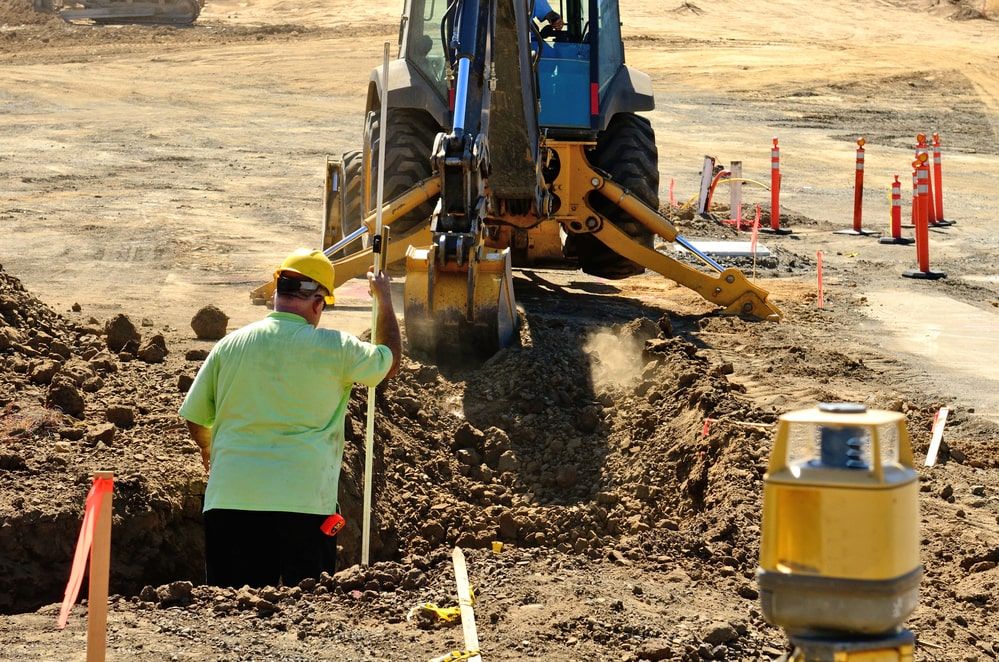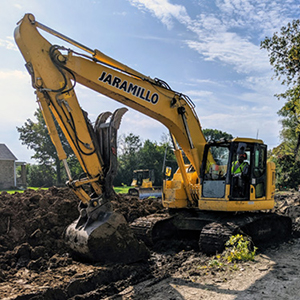Professional Septic Ohio - Trusted Septic Tank Experts in Ohio
Wiki Article
Comprehensive Excavation Methods: Understanding the Principles for Success
In the realm of construction and civil engineering, the significance of effective excavation techniques can not be overstated. The cautious preparation, accurate implementation, and meticulous attention to information called for in excavation jobs demand a thorough method that incorporates various essential elements. From first dirt evaluation to the application of precaution and regular development monitoring, mastering these core aspects is crucial for achieving success in any kind of excavation venture. Nevertheless, real proficiency exists not just in understanding these basics however in perfectly integrating them to browse the intricacies of excavation tasks with skill.Comprehending Excavation Job Planning

Effective excavation projects are constructed on the foundation of precise and comprehensive preparation. The initial phase of any kind of excavation project is the drawing board, where critical decisions are made that can substantially impact the result of the job. Throughout this stage, it is important to collect all relevant info regarding the website, including topographical studies, dirt make-up, and any potential threats that may exist. Comprehending the task budget, range, and timeline restraints is important for developing a comprehensive excavation plan that ensures the job's success.
One secret element of excavation task planning is the development of a comprehensive timeline that details the series of deadlines, landmarks, and tasks. This timeline acts as a roadmap for the task group, enabling them to track development and make required modifications to make certain the task remains on schedule. Additionally, a well-defined budget that accounts for all expenditures, including tools service, labor expenses, and materials, is important for avoiding cost overruns and delays. By carefully taking into consideration all these aspects during the planning stage, excavation tasks can be carried out effectively and effectively, bring about successful results.
Dirt Analysis and Website Examination
Carrying out comprehensive dirt evaluation and website examination is a vital action in the prep work phase of any kind of excavation task. Soil analysis includes figuring out the structure, framework, and homes of the dirt at the excavation website. This info is vital for recognizing the soil's bearing capacity, wetness content, and possibility for disintegration, which are vital factors in identifying the excavation approaches and devices required for the job.Site assessment goes past dirt evaluation and incorporates a broader analysis of the overall site conditions. This assessment includes identifying any potential risks, such as underground energies, ecological concerns, or unpredictable surface, that could impact the excavation process. By thoroughly evaluating the website, project managers can develop reliable excavation approaches that focus on safety, efficiency, and environmental management.
Using advanced innovations like ground-penetrating radar, soil tasting, and drone studies can enhance the accuracy and effectiveness of soil analysis and website examination. Investing time and resources in these initial steps can ultimately conserve time and stop expensive delays or complications throughout the excavation process.
Devices Choice and Usage
Efficient excavation tasks rely heavily on tactical tools choice and utilization to make sure optimum performance and performance. Choosing the right equipment for the work is vital in making best use of efficiency and decreasing downtime. Factors such as the kind of soil, deepness of excavation, and project range play a considerable role in establishing the most ideal tools for the task at hand.
In addition to selecting the proper tools, correct utilization is key to job success. Operators has to be educated to handle the equipment securely useful source and successfully - lancaster trenching. Routine upkeep checks and timely repair work aid protect against breakdowns and ensure consistent performance throughout the task
Precaution and Laws Compliance
In the realm of excavation tasks, focusing on precaution and conformity with laws is extremely important to guaranteeing a safe and lawfully sound functional atmosphere. Safety actions incorporate a variety of methods, consisting of carrying out detailed website analyses, applying appropriate signage and obstacles, and offering adequate safety training for all employees associated with the excavation procedure. Adherence to guidelines, such as OSHA requirements in the USA, makes sure that the excavation project fulfills the needed standards to protect employees, onlookers, and the surrounding setting.
Surveillance Progression and Adjusting Methods
Exactly how can forecast managers properly track the advancement of excavation tasks and adjust their methods accordingly to enhance end results? Tracking progress is essential for making certain that excavation jobs remain on track and meet target dates. Job managers can make use of numerous devices and techniques to track development, such as everyday progress records, routine site inspections, his explanation and progressed monitoring technologies like drones and GPS tracking systems. By continually keeping track of the job's advancement, managers can identify any type of potential delays or concerns at an early stage and take positive steps to resolve them.
Final Thought
In verdict, understanding the basics of thorough excavation techniques is crucial for the success of any task. By understanding project preparation, examining soil and site problems, selecting ideal devices, adhering to safety regulations, and monitoring progression, job managers can make sure a efficient and smooth excavation procedure. Implementing these methods will lead to effective results and lessen possible risks or obstacles during the excavation project.
The preliminary phase of any type of excavation task is the planning phase, where vital choices are made that can substantially influence the outcome of the job. Recognizing the job range, spending plan, and timeline restrictions is crucial for developing an extensive excavation strategy that makes certain the task's success.
Just how can predict managers properly track the development of excavation projects and adapt their approaches appropriately to enhance results? By very closely keeping track of development and being eager to adjust strategies, job managers can improve the total success of excavation tasks.
By recognizing task preparation, assessing dirt and site conditions, selecting suitable devices, conforming with security guidelines, and checking progression, task supervisors can ensure a effective and smooth excavation process.
Report this wiki page